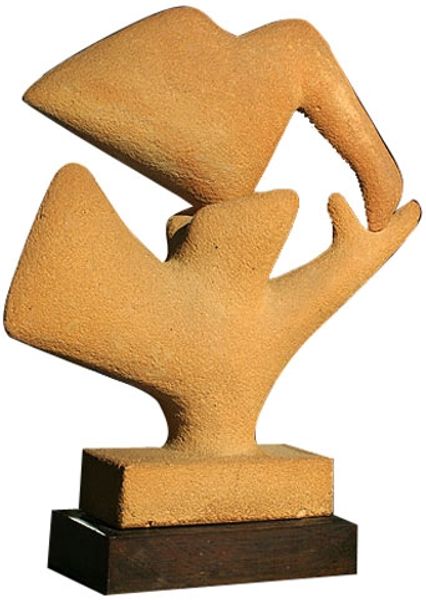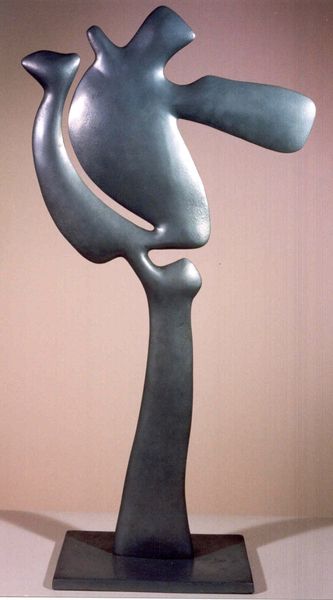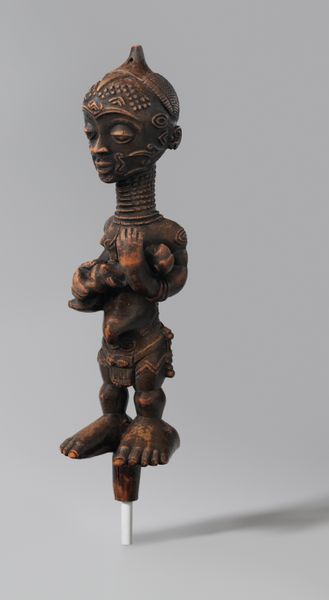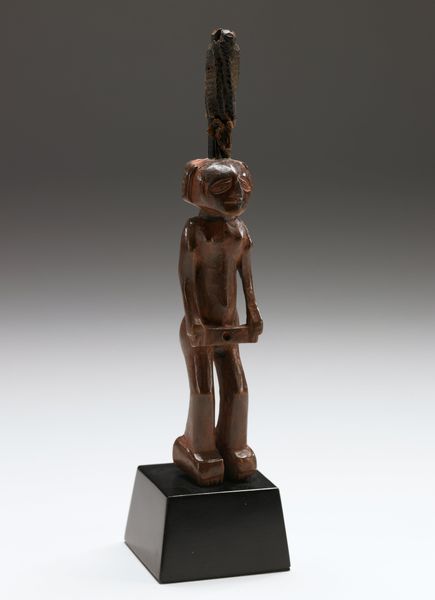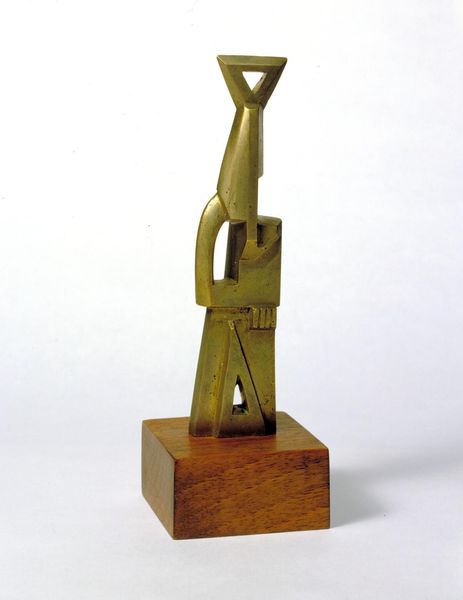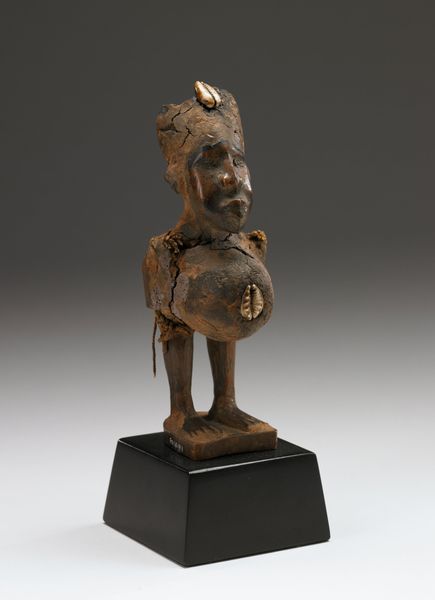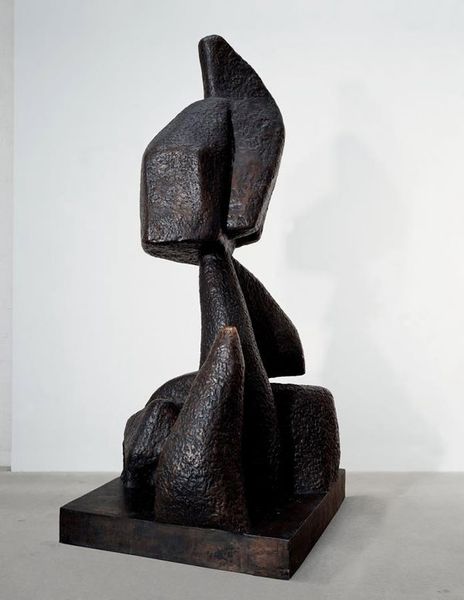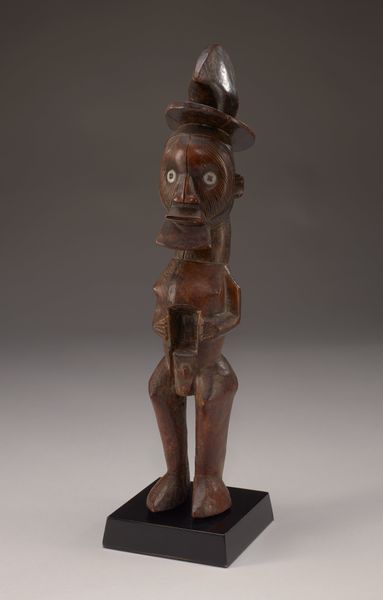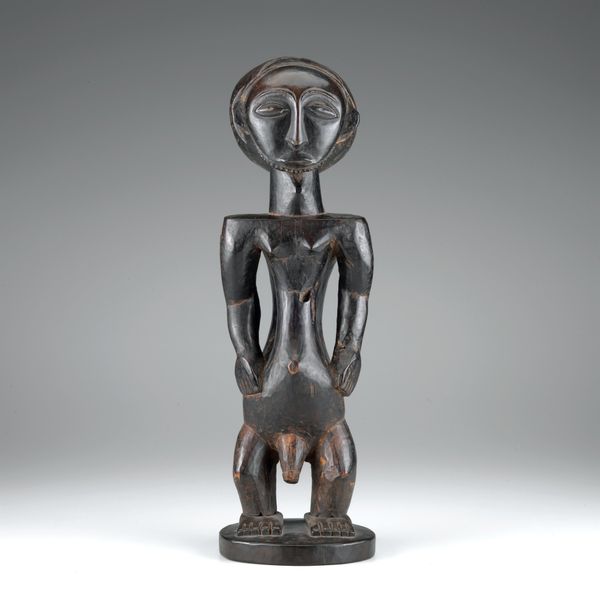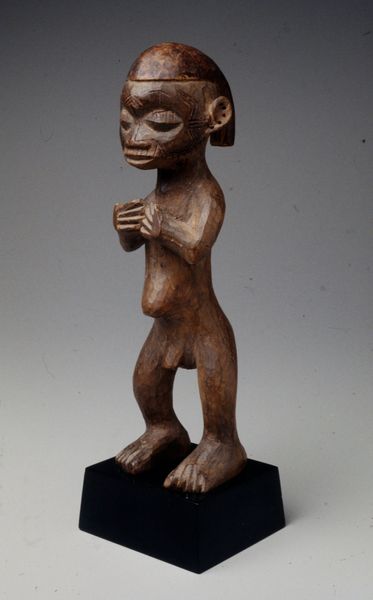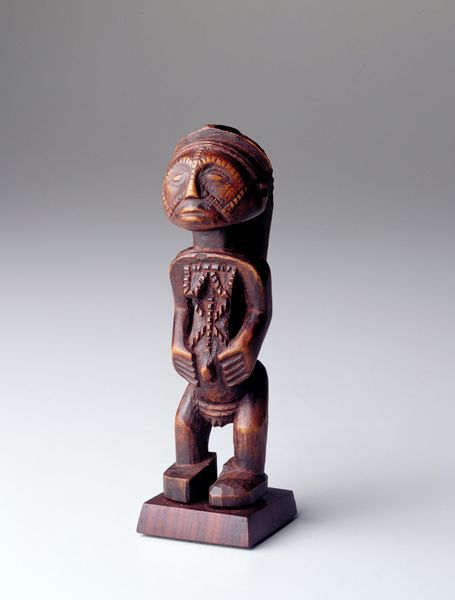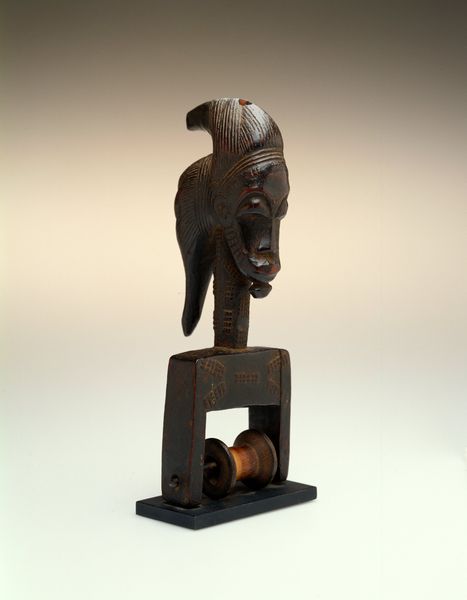
bronze, sculpture
#
abstract-expressionism
#
sculpture
#
bronze
#
geometric
#
sculpture
#
abstraction
Dimensions: 200.0 x 104.0 cm
Copyright: Public Domain
Curator: Otto Freundlich’s "Ascension," dating from around 1929 to 2004, stands before us, an abstract bronze sculpture housed here at the Städel Museum. What strikes you first? Editor: Immediately, I notice the dense materiality, the worked bronze itself. It’s quite compact; the sculpture seems to emerge from the earth, or is perhaps weighed down by its own density. It is heavy but at the same time seems to move toward the sky. Curator: I agree, and that sense of duality is central. Freundlich, a key figure in abstract art, imbues this piece with powerful, optimistic symbolism, even amidst the rise of oppressive forces in Europe during its conception. The title "Ascension" hints at transcendence. We can observe his social critique when contextualizing the piece, as his Jewish identity was ultimately weaponized. Editor: Considering its delayed casting, the work gains another layer of complexity. The material process also plays an important role: Bronze’s capacity for taking on texture is very important. The fingerprints, the tool marks, remain as signs of labor. How did Freundlich want to integrate into societal concepts, such as manual labor and mechanical work? Curator: His background makes the inquiry essential. Freundlich worked with simplified, geometric forms seeking universal harmony, connecting personal spiritual growth with social reform and political awareness. The fragmented, blocky base is crucial here, acting almost as an architectural support to the amorphous, bulbous head-like form, but they can also represent an active pushback to societal normalcies, Editor: Absolutely, it seems like Freundlich is investigating material stability, what supports what, what bears what down. And ultimately it questions social structures themselves. How labor moves, and ultimately creates meaning, as its materials interact with labor and societal changes. Curator: Precisely. "Ascension," in that sense, remains a testament to the endurance of the human spirit. Its journey is not only upwards but deeply connected to our roots in social reality. Editor: It is a beautiful encapsulation of process, material, and historical context that all come together, pushing through societal challenges. A powerful visual statement indeed.
Comments
stadelmuseum almost 2 years ago
⋮
Otto Freundlich wanted to take a stand: “I […] fight for the liberation of people and objects from the practices of ownership, and against all that confines them and does not correspond to their true nature.” The title ‘Ascension’ refers to the idea of rising – or uprising – as a social phenomenon, but also to the free development of the mind and spirit. Individual and independent parts have been combined here to form a new whole – a sculpture vaguely reminiscent of an oversize bust. No sculptor before Freundlich attained a comparable degree of abstraction.
Join the conversation
Join millions of artists and users on Artera today and experience the ultimate creative platform.
